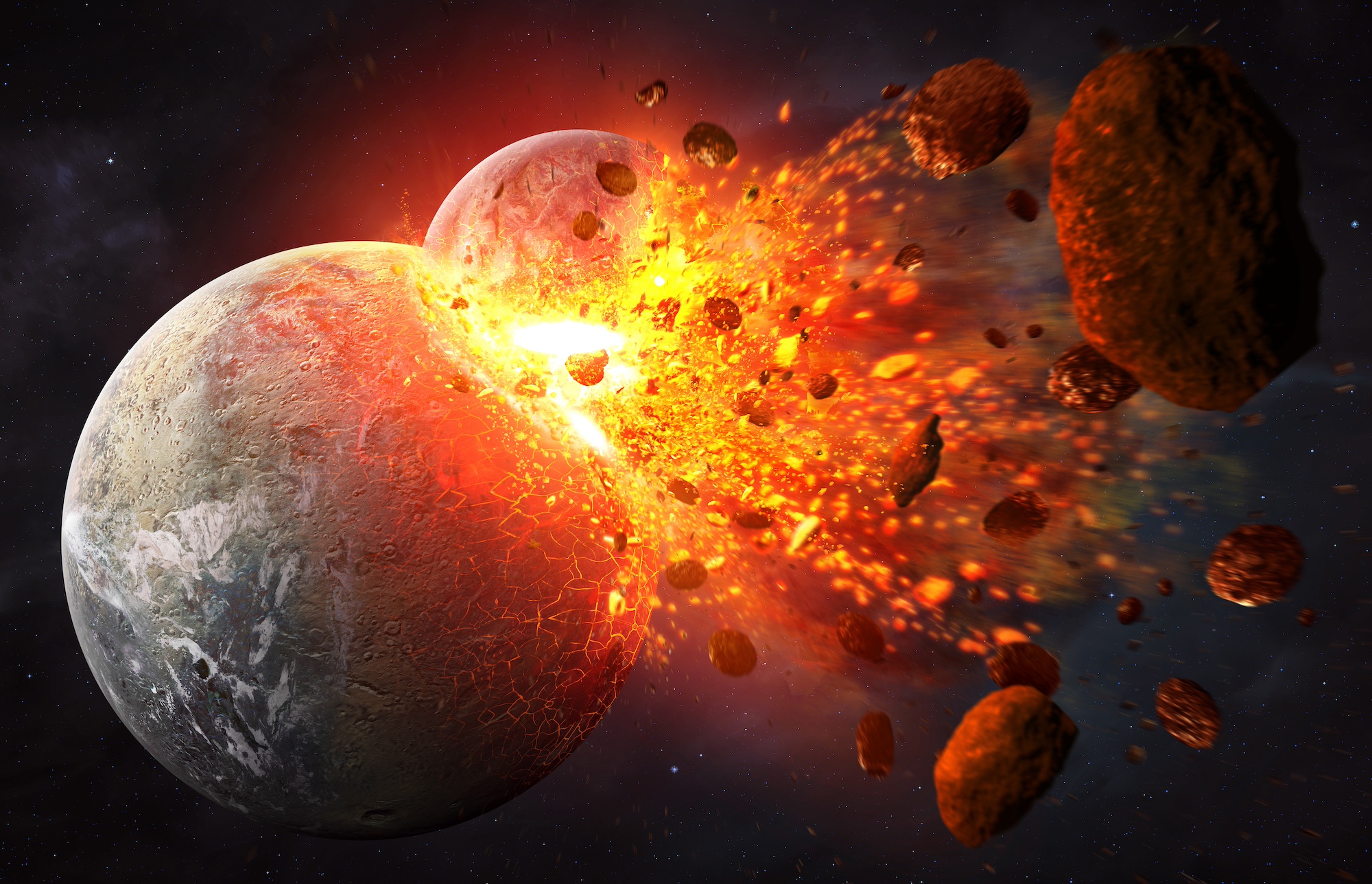Most moons that we know of are believed to form by accretion: the slow consolidation of small rocks and dust orbiting a central mass. That central mass becomes a planet; the smaller, outer bits become a satellite, or several. But Earth's moon—the Moon—is probably special. The Giant-Impact Hypothesis is widely accepted among scientists, as well as being a very metal name. What it describes is even more metal.
About 4.5 billion years ago, when Earth was still soft and warm and fresh out of the oven, and wholly moon-less, our planet was struck by another, Mars-sized planet, which we call Theia. This would have been a nasty collision for everyone involved. A whole hunk of mixed Earth/Theia material would have been chucked out into space, and some of it would have remained within Earth's gravitational influence, gradually coalescing into the Moon. (Possibly two moons! A smaller, more distant moon could have "pancaked" into the outer face of the larger, closer one, according to one study.)
That rocks, obviously. But why do we believe this is the case when accretion perfectly explains most moon formation? A few good reasons. The fact that the Moon's orbit perfectly matches Earth's rotation—the result of which is that we always see the same face—hints that the two were originally one body. The Earth-Moon system has a suspicious amount of angular momentum, which would be explained by the big smashy-smashy. The Moon has a tiny core, hinting that it was formed disproportionately from lighter, non-metallic elements, Theia's heavier elements having been consumed by Earth's core in the collision. And isotope ratios of Moon rocks are similar to those we've got on Earth, suggesting Moon rock was originally formed down here. There are other strong arguments for the hypothesis, but they're very science-y and I'm already convinced.
OK, so that's the Moon. But what happened to Theia? She might have been inside us all along, according to a paper published this week in Nature. The paper uses the Giant-Impact Hypothesis to account for two mysterious continent-sized lumps deep within Earth's mantle.
About 1,800 miles down are what are called low-velocity provinces. These LVPs are denser than the material around them, and we know about them because seismic waves pass through them noticeably slower than we'd expect. According to the study, computer simulations demonstrate that when Theia impacted Earth, denser parts of the impactor would have stayed coherent and settled within the Earth/Theia stew, eventually settling on top of the new planetary core. Those iron-rich LVPs, in this theory, are just leftover Theia bits—and they account for up to one-fortieth the total current mass of Earth.
"Our work indicates this giant impact had a long-lasting effect for Earth's whole evolution, and it could potentially explain why Earth is geologically unique compared to other rocky planets," said Qian Yuan, a geodynamicist at the California Institute of Technology and the lead author on the study.
What does this mean for me? you might ask. Shut up! It's cool, and that should be enough. But also it might be the only reason you're here. Earth has plate tectonics that may be unique to our solar system. More specifically, subduction: when one plate undercuts another. Other planets and moons have plate tectonics, but as far as we know they don't have subduction. Yuan told Space.com his next area of investigation is whether those Theia lumps, with their aberrant density, might be why we have subduction at all. If that's the case, then the entire history of Earth as we know it—and not just the Moon—could be credited to what Theia left behind as a parting gift.






